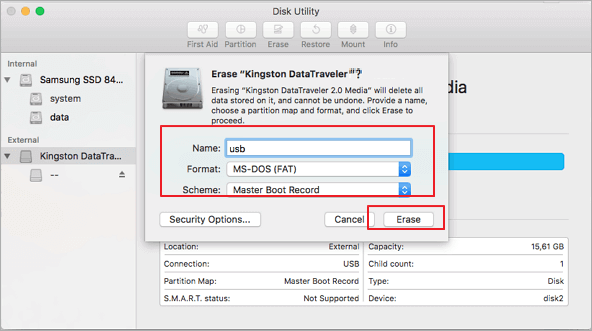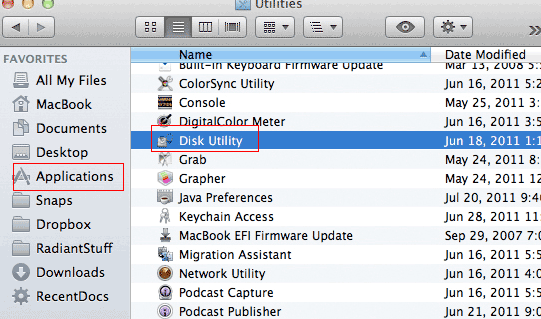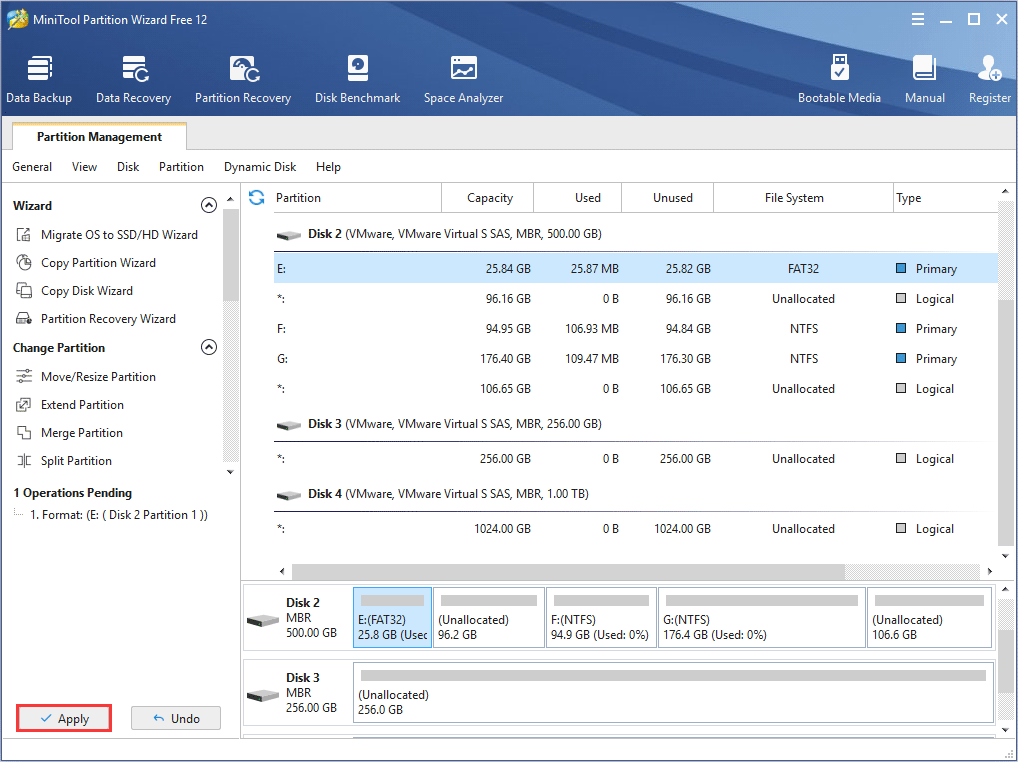- How to format usb flash on mac or how to format hard disk on mac with best free usb drive formatting software download for mac usb formatter mac or HP USB Disk Storage Format Tool mac edition download and free hard disk format tool mac to format usb flash drive fat32 on mac os or to create bootable usb or format usb in mac.
- Download FAT32format GUI (GUIFormat) - Seamlessly format FAT32 file system drives and partitions and avoid potential performance issues in the future using this application.
- Download Fat32 Formatter For Mac - arabnam FAT32 Format (stylized as fat32format as written on the command line) is a disk formatting utility designed to format discs larger than 32 GB with the venerable FAT32 file system.
- Such FAT32 formatter download is available on the web and reading the best six downloads can help you take an informed decision in selecting the right one. Related: 23+ Best Note-Taking Management Software for Windows, Mac, Android 2021.
Fat32 Or Ntfs For Mac Os X 10.10. Compatibility is the main issue with NTFS, so you should use FAT32 mostly in your pen drives and SD cards. FAT32 is compatible with most operating systems. Mac OS X now has full read support for NTFS drives, but Macs can’t write to NTFS drives by default. This requires additional software or tweaks.
Apple has released macOS Mojave 10.14 for a long time, which embodies a handful of new features including the improved Dark Mode, changes to the Finder, better functionality in Quick Look, changes to the way users taking screenshots, changes to Safari and a redesigned Mac App Store, etc. But just like its predecessors, macOS Mojave 10.14 still doesn't enable write to NTFS drive.
Fuse4x + Ntfs-3g works on OS X Lion. Install Homebrew. In Terminal, type brew install Fuse4x. Next, type brew install ntfs-3g. Type brew info fuse4x-kext. Enter the 2 lines of $ sudo code separately at the start of the text given. Type brew info ntfs-3g. Enter the 2 lines of code separately after the line 'To replace the default. Use NTFS Drive on MAC #1 Terminal. Now you may not know, but modern MAC OS support NTFS volume (both read and write) However, this feature is disabled by default. We will come to that later, If you want to enable the support for NTFS, you can easily do it by editing a small file. Simply insert your hard drive, in your MAC note down its.
How to write to NTFS drive on macOS Mojave?
Solution 1: Free download NTFS for macOS Mojave 10.14 software

As writing to NTFS drive is so frequently needed, especially for those who have both Windows PC and Mac computers, a professional NTFS for Mac application that supports macOS Mojave 10.14 would be of great help.
Fortunately, there's iBoysoft NTFS for Mac, one of the best NTFS driver for macOS Mojave 10.14 software in the market which allows you to read write NTFS drives in macOS Mojave 10.14.
iBoysoft NTFS for Mac is the best NTFS for Mac application which can read/write to NTFS drive in macOS Catalina 10.15/Mojave 10.14/High Sierra 10.13/Sierra 10.12 and Mac OS X El Capitan 10.11/Yosemite 10.10/Mavericks 10.9/Mountain Lion 10.8. It is a comprehensive NTFS for Mac solution for Mac users. On one hand, it can mount NTFS volumes in read-write mode automatically. Also, you can open, unmount and eject the NTFS volumes with one click. On the other hand, it allows users to erase data on NTFS volumes and repair NTFS file system errors. Additionally, it supports listing and opening all attached external drives and reformatting them into NTFS file system if needed.
Tutorial to write to the NTFS drive in macOS 10.14 Mojave with iBoysoft NTFS for Mac
Step 1: Download, install iBoysoft NTFS for Mac on Mac.
Step 2: Connect the NTFS drive to Mac.

Step 3: After the NTFS drive has been successfully mounted, you can open it and then write to the NTFS drive.

iBoysoft NTFS for Mac is very easy to use.
Solution 2: Reformat NTFS drive to exFAT/FAT32
As two universal file systems, exFAT and FAT32 are compatible with both Windows and Mac computer. But before reformating, you should be sure to back up all important files.
Solution 3: Mount NTFS drive on macOS Mojave with command line
Notice: using command line tomount NTFS drive on Mac is not officially supported and thoroughly tested by Apple, which might cause occasional instability to your Mac. Besides, it's easy to input wrong command which will result in unexpected damage to our Mac and data inside. So use it with caution.
Step 1: Go to the Applications > Utilities folder and launch the Terminal program.
Step 2: Input 'sudo nano /etc/fstab' to edit the fstab file (supply your password when prompted).
Step 3: Type 'LABEL=NAME none ntfs rw,auto,nobrowse' in the editor window for the fstab file. (Be sure to change the word NAME to the name of your drive)
Step 4: Press 'Control+O' to save the file, followed by 'Control+X' to exit.
Step 5: Unmount our NTFS drive and attach it again.
If you are not going to tranfer files between Windows and Mac a lot, converting NTFS to APFS in macOS Majove is also a good option to solve the incompatibility problem. If you are going to keep the drive formatted with Microsoft NTFS, you can easily read write NTFS in macOS Mojave 10.14 through these solutions. Among them, installing an NTFS for macOS Mojave 10.14 tool is the most convenient and reliable way which guarantees your Mac and data safety.
Dropzone for mac. NTFS and FAT 32 record systems, i.e., a pair of logical constructs an operating system may use to monitor handle files on a disk volume. Storage hardware can’t be utilized with no file system; however, all operating systems have not supported all file systems.
All operating systems support FAT32 since it’s a straightforward file system and has been around for a long time. NTFS is stronger and powerful than FAT, as it uses innovative data structures to improve reliability, disk space usage, and general functionality. Support for NTFS has increased but isn’t quite as universal as FAT32.
Suppose you are seeking to select which file system to use when formatting a disk or USB drive; consider transparency. By way of instance, if you want to utilize the USB on older computers, or non-PC systems such as electronic image frames, TV sets, printers, or projectors, choose FAT32 since it’s universally supported. If you’re opting for a file system for your backup hard disk, select NTFS. Keep reading Colorfy’s following article to know better.
See also:

What’s the FAT32 & NTFS?
FAT32 is the most common variant of the FAT (File Allocation Table) file system, made by Microsoft in 1977. It’s the older of these two file systems. Therefore it’s not quite as efficient or complex as NTFS. It uses the File Allocation Table to explain these clusters’ feasibility stats at a file system and the connection relationship between each. It functions as a material table for your OS and suggests that the files and directories are saved on the disc.
NTFS (New Technology File System) is a proprietary sourcing file system created by Microsoft in 1993. Beginning with Windows NT 3.1, it’s the default file system of the Windows NT family. It’s introduced as a substitute for its FAT file system; it’s more powerful and powerful since it uses innovative data architecture to improve reliability, disk space usage, and general functionality.
Format To Fat32 On Mac
NTFS and FAT 32
Compatibility
FAT32 is read/write compatible with the vast majority of current and lately outdated operating systems, such as DOS, most flavors of Windows (up to and including 8), Mac OS X, and lots of flavors of UNIX-descended operating systems, such as Linux and FreeBSD.

On the other hand, NTFS is entirely totally compatible with Windows out of Windows NT 3.1 and Windows XP up to and including Windows 8. Mac OS X 10.3 and outside have NFTS read capabilities, but composing an NTFS volume wants a third-party program utility such as Paragon NTFS for Mac. There are different hacks and workarounds for NTFS around the Mac; however, in any instance, NTFS is semi-compatible using OS X. NTFS on Linux systems is sporadic for both write and read operations. Search for NTFS-3G driver service on your Linux service page to find out if it is built-in.
Document Size Matters
FAT32 file size service tops out in 4GB and quantity size shirts out at 2TB. It follows that you are confined to 2TB FAT32 partitions if you would like to utilize a 4TB drive. Additionally, it suggests that you’re restricted to 4GB documents. This is an issue with uncompressed high-definition film documents, where 30GB documents aren’t unheard of. Theoretically, NTFS is restricted by design to 16EB (Exabytes). One Exabyte is the equal of one billion Gigabytes, so we’re quite a long way away from maxing out NTFS. In practice, two to 4TB volumes would be the limitation at this moment. Larger volumes will call for a 64-bit OS and compatible hardware.
Features of NTFS vs FAT
FAT32 is a fluff-free and easy system that’s recorded and mostly keeps track of file locations. The ease of FAT32 has made it that the file system of choice for mobile storage mediums such as in-memory cards, mp3 players, and flash players. The NTFS file system is much more complicated and provides multiple improvements that boost security and functionality. NTFS file system enables automatic file compression before being composed, freeing up disk space, and has disc quotas that permit the system administrator.
FAT32 is a derivative of this (FAT) File Allocation Table supporting drives with over 2GB storage. The biggest possible file is 4GB minus two bytes. In comparison to the earlier models, FAT32 utilizes little clusters and therefore uses space more efficiently. It may relocate the main folder and use the FAT backup copy instead of the default backup. NTFS is far more elastic than FAT32. NTFS does file-level encryption, sparse file support, disk usage quotas, dispersed link tracing, document compression, hierarchical storage management, etc.
Data Transfer Rate
Broadly, the slowest link (generally the hard disk interface to the PC such as SATA) plays a part in the file-transfer rate and highest throughput, but the NTFS file system was analyzed to be quicker than FAT32 on many benchmarks. This is correct sometimes because the data transfer rate can also be confined to many different facets, such as drive technologies (HDD vs. SSD, flash non-flash, etc.) and document fragmentation (on rotation drives).
Safety
In FAT32, you’ll need to count on share permissions for safety. This usually means they are great from the Network, but they are vulnerable. On the other hand, NTFS permits you to set permissions on local folders and files too.
Compression
FAT32 provides no file compression attribute at all. At the same time, NTFS enables you to compress folders and files separately, so you don’t need to slow down the machine by depending on partition compression.
Additionally, the FAT32 file system can not appear to deal with huge files and contains a file size limitation of approximately 4GB. So, if you are considering copying a high-definition picture in your USB hard disk, a perfect method is to convert the drive’s file system straight to NTFS.
Fat32 Formatter For Mac Download
Read also:Best Xbox One External Hard Drive: Full Guide 2020
Fat32 And Ntfs For Mac Os 10.13
Which is Faster?
Fat32 And Ntfs For Mac Os X 8 0
While the file transfer rate and highest throughput is limited by the slowest link (generally the hard disk interface to the PC such as SATA or a network port such as 3G WWAN), NTFS formatted hard drives have analyzed quicker on benchmark tests than FAT32 formatted drives. However, other elements will be in play, such as drive technologies (HDD vs. SDD, Flash vs. non-Flash, etc.) and document fragmentation (on rotation drives).
Though your OS generally makes the option of hard disk format for you beforehand, you may select which format when you are re-formatting a driveway, especially an external drive. Should you will need the driveway to get a Windows-only surrounding, NTFS is your ideal alternative. Should you have to swap files (even sometimes) using a non-Windows system such as a Mac or Linux box, FAT32 can provide you agile, provided that your file sizes are smaller than 4GB.
How To Format To Fat32
Ntfs For Mac
Fat32 Mac Download Full
Video: Explaining File Systems: NTFS, exFAT, FAT32, ext4 & More